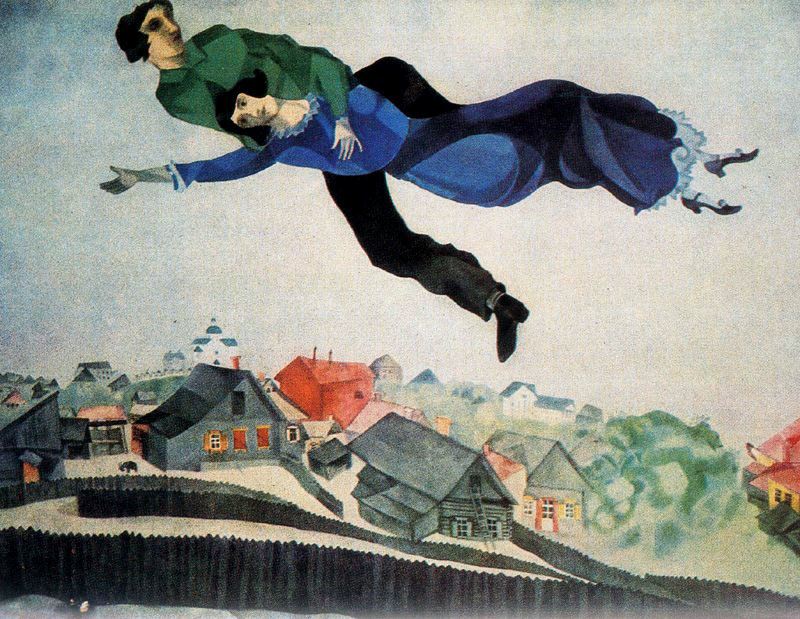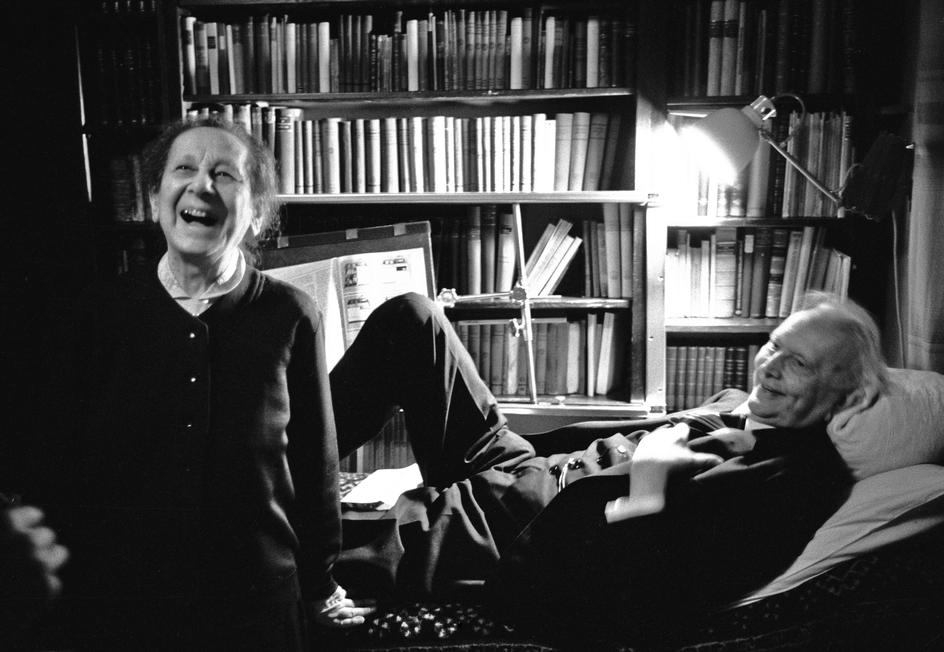The Angel of History: An Unexpected Encounter In the Middle of Long Island
“Over the Town,” Marc Chagall (1918). Oil on canvas, 17.8 X 22 inches. Tretyakov Gallery, Moscow, Russia.
Once upon a time my wife Sharon and I were having pizza at a small but crowded restaurant, which sat between King Kullen and a Genovese Drug Store near our home in Miller Place, NY. The name of the pizzeria has long since faded from memory. However, I remember it was a sunny spring afternoon when we decided to drop in for a slice before picking up groceries and sundries. In a word, it was a pretty normal day.
As for the pizzeria, it was bustling like usual. Families and couples abounded, placing their orders and folding their slices, as everyone enjoyed their food and one another’s company. Despite the crowd, Sharon and I secured a booth in the middle of the premises, which were no more than a hold-in-the-wall. As we began to indulge ourselves a tiny woman with gentle eyes and an East European accent asked if she could sit with us. “May I join you?” she asked plaintively. Seeing that there was no place else for her we said “Oh, sure,” gesturing for her to sit as Sharon slid over a little to make room for our unexpected guest.
The woman was pleasant and asked us both about our backgrounds. She really liked the couple that Sharon and I made, she said. However, what peaked her interest was finding out that I was in the philosophy doctoral program at Stony Brook. “What are you studying? Are you working on your dissertation?” she asked with obvious interest. I said “Yes” and gave her a summary of my work on the “poetic experience,” in particular my phenomenological analysis of poetry as an integral part of the human experience. “Who are you reading?” she asked further. “Oh, you know,” I said, trying not to sound too pompous or boring, “Merleau-Ponty, Heidegger, Dufrenne, people like that.”
“You know, I studied philosophy once,” she said as I noticed that her toes barely touched the floor. “I was a student in Germany a longtime ago.” She then told me this remarkable story of having been one of Karl Jasper’s students during the 1930s at Heidelberg University. At the time, the author of The Origin and Goal of History was being driven out by Heidegger, “a Nazi sympathizer,” whom the woman at our table also said she knew as she took a small bite of her regular slice. She then recounted her professor’s “last lecture,” when the students were aware that their revered teacher was being forced out of the university and into exile because of his “Jewish wife.” “All of us were stomping our feet at the end of his lecture,” she recalled with a mix of nostalgia and lingering outrage at what Heidegger “did to his friend.”
At this point I don’t remember what the tiny woman with the East European accent said about the author of Being and Time, but I do recollect that it was less than flattering and that she wanted me to “forget about him” and instead find a place for Jaspers in my work. I listened sympathetically. Unfortunately, at the same time I was committing myself to reading more Jaspers, I knew that he never wrote about poetry or art, as did his disloyal colleague.
In the end, I could only feel genuine amazement at what I heard from our unexpected guest on this beautiful spring day in 1996. For a philosophy student, Jaspers and Heidegger were mythic figures. So, to meet someone who actually knew them both and attended their lectures was nothing short of astounding! As for who this woman was who shared our table for a slice of pizza, she said her name was “Vera Dunham” and that before her retirement she “taught Russian literature.”
Karl JASPERS, German psychologist and philosopher, at home with his wife. SWITZERLAND. Basel. 1968. Photographer: Thomas Hoepker



